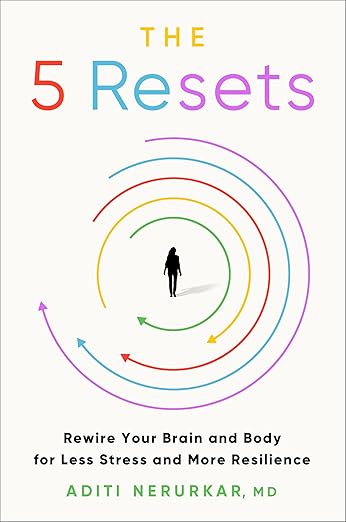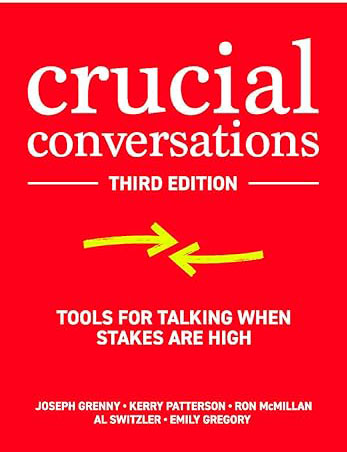Blog Short #229: How to Deal With Condescending People

Photo by dtiberio
Being around someone who habitually throws condescending darts at you is bad for your mental health. It can shoot holes in your self-worth, make you feel weak, and leave you exhausted and moody.
The good news is that there’s a way to deal with it that maintains your self-worth while also making the other person think twice about trying it again.
I’ll show you how to do it in today’s blog.
Let’s begin with a definition.
Condescension
Condescension is a blanket term for any behavior that talks down to you.
It includes:
- Rudeness
- Belittling
- Patronizing
- Dismissiveness
- Name-calling
- Insults, even those disguised as jokes
- Contempt
- Sarcasm
- Personal attacks
The purpose is to make you feel inferior so the other person can feel superior.
It’s an insidious method of gaining power and control at your expense.
Why is someone condescending?
We mentioned power and control, and that’s part of it, but the underlying reasons are more psychological.
The most obvious reason is insecurity.
Someone who isn’t comfortable with who they are, who feels too vulnerable, and who is insecure tries to subdue those feelings by making someone else feel them. It’s an exercise in projection.
“Let me take my insecurity, negative feelings about myself, and vulnerability and hand them all off to you so I don’t have to feel them. Then I can feel better than you, and all those bad feelings disappear!”
Someone might do this occasionally when they’re not feeling up to par.
Yet, other people do it all the time because those feelings of insecurity are embedded in their psyches and have seeped into their identities.
People with Narcissistic Personality Disorder, in particular, fall into this category. Underneath all their bravado and condescension lies a small, tenuous self that feels weak and unlovable.
What to Do When It Happens
Before we start, it helps to understand what happens to someone when they’re rude, belittling, patronizing, or condescending. I learned this from Jefferson Fisher.
He points out that they get a hit of dopamine.
I’d never thought of it that way, but it’s true. It’s arousing when someone attacks another person, regardless of how they do it.
They feel powerful. This sense of control and power stimulates the release of dopamine, which is the reward neurotransmitter in the brain.
You get a small hit of it every time you look at your phone, expecting to see something that will stimulate you.
It’s like being on a high momentarily. And when you’re on a high, you aren’t feeling low. You’re distracted from feeling weak and small.
But here’s the thing to remember:
The power of dopamine lies in the anticipation of reward, not so much the reward itself. That means that when someone insults you, their dopamine revs up in anticipation of your response.
If you take the bait and react by throwing an insult back or defending, they have their reward. They got you off balance and succeeded in making you react. They’re in control.
But what if you don’t give them that reaction? What happens then?
That’s the key to turning it around.
Let’s go through specific steps to take. I’ll divide these into two types of behavior with similar responses but with some minor differences. These come from Jefferson Fisher.
Scenario 1: Direct Attacks
These include all those blatant behaviors like insults, rudeness, belittling, name-calling, or contempt.
The common thread is the need to hurt or harm the other person.
Step 1: Take a long pause.
Be silent for a bit. Don’t respond in any way.
You can look directly at the person if you like, but even if you don’t, simply pausing your activity, movement, and speech is enough to diminish that dopamine hit.
You’re withholding the anticipated reward.
It makes the person uneasy and, in some cases, second-guess what they said or did.
Step 2: Repeat what they said very slowly and calmly.
You’ve disarmed them already with your silence.
Now, when you slowly repeat the words they said, you’re letting them know two things:
- You heard every bit of it.
- It’s not okay with you.
By reflecting it back and making the person sit with it, the dopamine continues to drop.
Step 3: Question the intent.
Ask the person what they were hoping to gain by saying what they said.
“What did you intend by saying that?”
“How were you expecting me to react?”
“Were you hoping to offend me or start a fight?”
When you question the intent, you shift the focus away from you and back to them.
That’s not what they had in mind. It makes them squirm a little and, hopefully, regret their words.
But even if that isn’t the case, you’ve set a boundary with those questions. You’ve made it clear that those behaviors aren’t going to fly with you.
If the person comes around and tells you what’s actually bothering them and apologizes for their behavior, you can have an honest discussion.
But if not, you can opt out and walk away. You’ve established the boundary, and it’s unlikely they’ll do it again.
If the same person repeats this behavior, you can meet that with silence, but don’t respond otherwise. Walk away after that. You don’t need to repeat the whole scenario.
Scenario 2: Indirect Attacks
This category includes back-handed compliments and condescending statements that are indirect.
“You did a good job on that report. I can’t believe it!”
“You lost some weight! How surprising!
“Wow! You finally got a boyfriend. Congrats!”
With back-handed compliments, you get a double message. One is a compliment, and the other is a dig.
Sometimes, it’s not easy to tell if there’s a dig in there, but the surefire way to know is that it leaves you feeling uneasy, insulted, or talked down to despite the compliment.
Genuine compliments make you feel good. They’re not ambiguous.
Here’s what to do.
Step 1: Ask the person to repeat what they said.
“Can you say that again? I’m not sure I got it all.”
When you do this, you alert them. They’re on shaky ground now.
Step 2: Next, call it out by questioning the intent.
“What were you trying to convey? I heard the compliment, which I appreciate, but I also heard a dig in there. Did you mean that?”
Then, wait for the response.
In many cases, the person will immediately say, “No, no, no – I didn’t mean that at all! “ Then, they’ll explain what they meant or reiterate the compliment. That’s fine. You can accept that.
But you’ve also set a boundary.
You can be sure that the next time, they’ll choose their words carefully. And if they did intend the dig, they won’t do it again.
One Other Response
When you encounter any of these situations, consider whether it’s worth your time and energy to respond.
Is this someone you want to have a relationship with or someone you have to work and get along with?
These questions can help you decide.
If the answer is no, then the best response is no response at all.
You can look the person in the eye, pause for a moment, and then turn around and leave, or you can simply ignore what was said and move on.
No response to a pointed attack or condescending remark zaps the dopamine hit and denies the offending person the reaction they were seeking. It also effectively sets a boundary.
The beauty of any of these strategies is that you shift the momentum of the interaction back toward the person who started it, leaving them to deal with the negative feelings they’re trying so hard to project.
The real point is, don’t allow someone to regularly talk down to you or try to make you feel small. You deserve better.
That’s all for today.
Have a great week!
All my best,
Barbara
P. S. You can read more about these strategies in Jefferson Fisher’s book, The Next Conversation.








 Dr. Nerurkar is a Harvard-trained stress expert who decided to pursue the study of stress and resilience when she experienced anxiety and involuntary heart palpitations that kept her up at night. She was a med student at the time and overworked, as most medical students are, and couldn’t think her way out of it.
Dr. Nerurkar is a Harvard-trained stress expert who decided to pursue the study of stress and resilience when she experienced anxiety and involuntary heart palpitations that kept her up at night. She was a med student at the time and overworked, as most medical students are, and couldn’t think her way out of it. The premise of this book is that we all live with a narrator in our heads.
The premise of this book is that we all live with a narrator in our heads. One of the opening statements in the first chapter of this book is:
One of the opening statements in the first chapter of this book is: Crucial Conversations is a detailed, actionable manual for how to navigate critical conversations successfully. The authors define a “crucial conversation” as a discussion between two or more people where there are: (1) opposing opinions, (2) high stakes, and (3) strong emotions.
Crucial Conversations is a detailed, actionable manual for how to navigate critical conversations successfully. The authors define a “crucial conversation” as a discussion between two or more people where there are: (1) opposing opinions, (2) high stakes, and (3) strong emotions. The Comfort Book is one of my all-time favorite books. It’s not a book to sit down and read cover to cover, although you could. It’s meant to be read slowly – one entry at a time.
The Comfort Book is one of my all-time favorite books. It’s not a book to sit down and read cover to cover, although you could. It’s meant to be read slowly – one entry at a time.